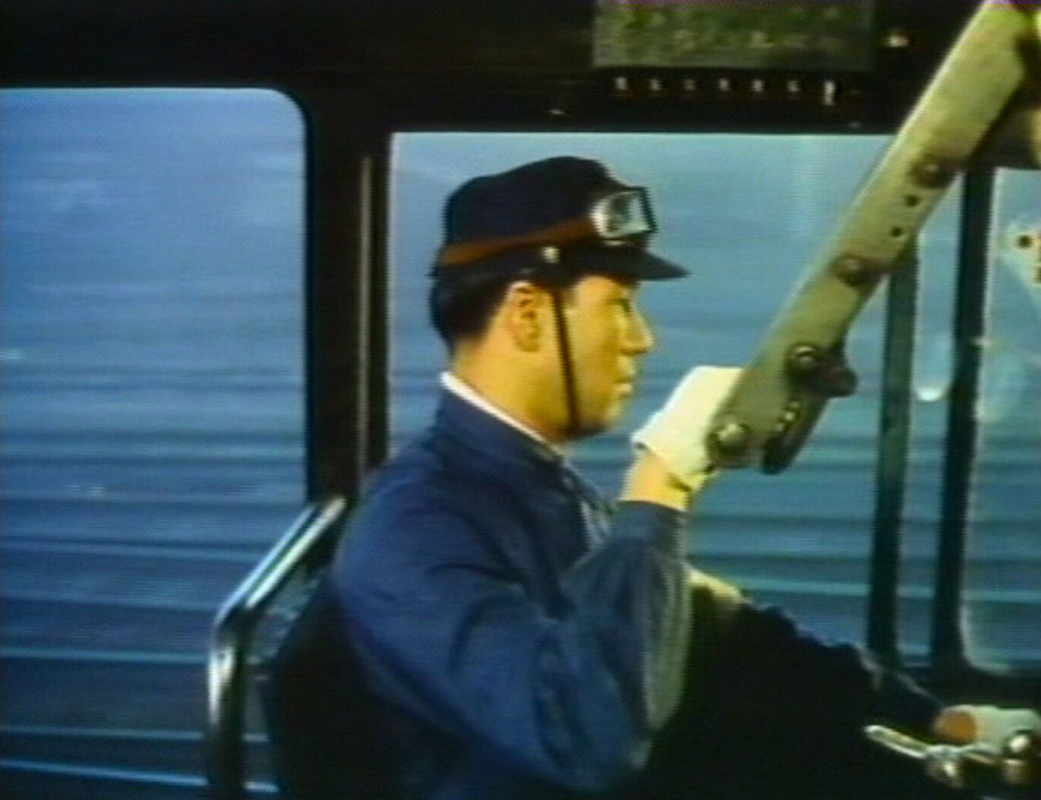Aru kikanjoshi (An Engineer’s Assistant)

In 1962 verscherpte de Japanse nationale spoorwegmaat schappij (JNR) de werkschema’s om een antwoord te bieden op de congestie op het spoor die veroorzaakt werd door een nieuwe sneltrein en het goederentransport in aanloop naar de Olympische Spelen van 1964. In mei van dat jaar vielen bij een treinongeluk 160 dodelijke slachtoffers. Om het negatieve beeld dat was ontstaan door deze ramp weg te werken, gaf de JNR opdracht voor deze film, die een beeld schetst van het harde werk dat werd geleverd om de treinen op tijd te laten rijden.
“The subject of this film was the promotion of a new device to avoid accidents. However, I had seen that the true cause of the accident was a congested service schedule, and I consciously placed emphasis on the depiction of the actual work of the engineer and his assistant, and of those who had chosen the route and were responsible for safety on the line on which the accident took place. As director I went over to the JNR Workers’ Union, which had officially taken the blame, and I earned their understanding and cooperation for a story analytically depicting their work." — Tsuchimoto Noriaki
Japanese spoken with English subtitles
Dokyument rojo (On the Road: A Document)

On the Road
On the Road: A Document was oorspronkelijk een opdracht film van de verkeersdienst van de Japanse politie. Tsuchimoto greep deze kans aan om samen te werken met de chauffeurs vakbonden. Het leverde een prachtige stadssymfonie op met een taxibestuurder en zijn familie als middelpunt, maar uiteindelijk vooral een intiem portret van de mensen, het verkeer en de geluiden van Tokyo. De film groeide uit tot een van de grote documentaires over deze snel veranderende samenleving. De film was met zijn dynamische aandacht voor detail en geluid niet waar de opdrachtgevers op hadden gehoopt en hij werd nooit publiek uitgebracht.
“Suzuki Satsuo’s skilfully manipulated hand-held camera with a long lens is meticulous, at times sentimental, at times bold, focusing on his subject in a way that seems as though it were composing a melody with images. On the Road showed us a new, powerful type of image. The images themselves, rather than any voice-over narration, speak to us directly, showing us a rich, fertile work.” — Shinomiya Tetsuo
Japanese spoken with English subtitles